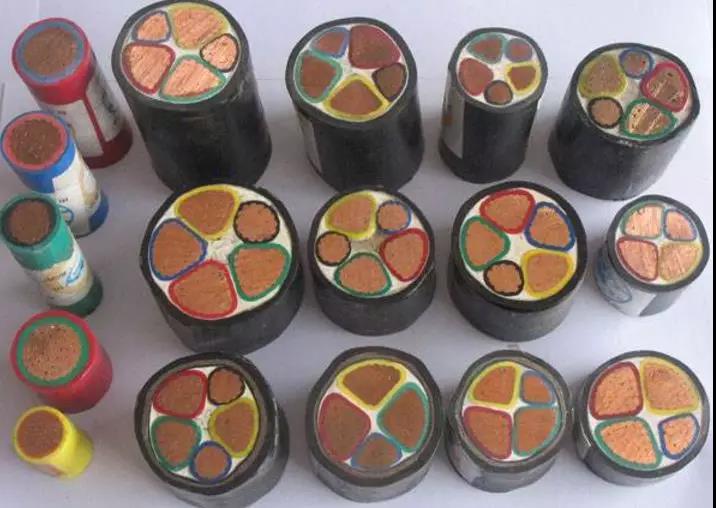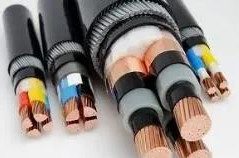UL standard
In UL standard, the common temperature resistance grades are 60 ℃, 70 ℃, 80 ℃, 90 ℃, 105 ℃, 125 ℃ and 150 ℃. How do these temperature ratings come? Is it the long-term operating temperature of the conductor? In fact, these so-called temperature ratings are called rating temperature in UL standards. It is not the long-term operating temperature of the conductor.
▍ rated operating temperature
If the reverse push method is adopted in UL standard system, it can be concluded that: a material aged for 300 days at a temperature a ℃ and its elongation rate is no more than 50%. Then the temperature a is subtracted by 5.463, and then divided by 1.02 to obtain the temperature B ℃, and the rated temperature of temperature B ℃ can be determined. This rated temperature is by no means the maximum long-term working temperature of the conductor allowed by the insulating layer. Because the “long term” in the long-term maximum working temperature should be the service life of the cable at this working temperature, which should be calculated at least in years. For example, in the photovoltaic AAC Cable standard en50618, the service life of the cable is designed to be 25 years, and the rated temperature in UL standard is generally higher than the long-term maximum working temperature of the conductor.

▍ short term aging temperature
The short-term aging temperature of materials, that is, the most common 7 days and 10 days in the standard, such as 105 ℃ materials, aging conditions are 136 ℃ × Seven days. So what is the relationship between this and the rated temperature? In UL standard, the temperature of short-term aging is obtained by the long-term experience of materials, but some methods are also summarized to confirm. The short-term aging temperature of a material is determined as described in ul2556-2007, chapter 4.3.5.6 and appendix D. First, select a rated temperature, aging temperature and aging time according to Table 1-1. If the elongation change rate of the material tested according to the above conditions is greater than 50%, it is recognized that the aging temperature can be determined according to this condition. If the elongation change rate is more than 50%, the rated temperature and short-term aging temperature of the material shall be reduced by one grade.
En/iec standards
In en/iec standards, rated temperature is rarely seen as UL standard, instead of conductor long-term operating temperature or temperature index. So what is the difference between the two temperatures?
In fact, in the en/iec standard system, the evaluation of the temperature resistance of AAAC Cables is mainly conducted according to en 60216 or IEC 60216. This standard is mainly used to evaluate the thermal life of insulating materials. The evaluation method is to test the aging of the material at different temperatures, and take the change rate of elongation at break as the end point of aging, and get the aging days of the materials at different temperatures. Then, the aging days and aging temperature are treated by linear regression, and a linear relationship curve is obtained. Then, the maximum operating temperature is determined according to the life of the cable, or the service life of the cable is determined according to the long-term working temperature. The temperature index refers to the temperature corresponding to the change rate of elongation at break when the change rate of insulation material is 50% after the heat aging of 20000h. Taking the PV cable standard EN 50618:2014 as an example, the design life of the cable is 25 years, the long-term working temperature is 90 ℃, and the temperature index is 120 ℃. The short-term aging temperature of insulating materials is also derived from the linear relationship. Therefore, the aging temperature of insulation materials in en 50618:2014 is 150 ℃. This aging temperature is very close to the aging temperature of materials rated 125 ℃ in UL standard series at 158 ℃.

It is not difficult to see that the long-term working temperature of the same conductor is different due to the different design life of the cable, and the aging temperature may be different. Under the same long-term working temperature, the shorter the design life of cable, the lower the short-term aging temperature of insulation materials can be required. For example, the long-term maximum working temperature of XLPE insulation required in IEC 60502-1:2004 is 90 ℃, while the aging temperature of this material is 135 ℃. The 135 ℃ here is very close to the aging temperature of 136 ℃ rated at 105 ℃ in UL standard, but it is much different from the aging temperature of insulation in en 50618:2014, which is also the longest-term maximum working temperature of 90 ℃. Although the design life of the cable was not found in 60502-1:2004, the design life of the two cables must be different.
National and industrial standards
In the process of compiling national and industrial standards, many contents refer to UL standard or en/iec standard. But because it is a multi-party reference, some of the statements I think are inaccurate. For example, in gb/t 32129-2015, jb/t 10436-2004 and jb/t 10491.1-2004, the temperature resistance grades of both materials and wires are 90 ℃, 105 ℃, 125 ℃ and 150 ℃, which is obviously used for reference to UL standard system. However, the expression of heat resistance is the maximum allowable conductor operating temperature for a long time. The expression of heat resistance is also clearly referred to the IEC standard system. In IEC standard system, the long-term maximum working temperature of conductor should be related to the design life of cable. However, there is no expression of cable life in these national standards and line standards. Therefore, the expression of “the maximum allowable operating temperature of the applicable cable conductor in a long term is 90 ℃, 105 ℃, 125 ℃ and 150 ℃” remains to be discussed.
Can XLPE of silane crosslink reach the temperature resistance level of 125 ℃? The more rigorous answer should be that the silane crosslinked XLPE can reach the rated temperature of 125 ℃ specified in UL standard, because in the general provisions of insulation and sheath materials in ul1581 chapter 40, it is clearly proposed that no provisions on the chemical composition of the materials are made. Whether the XLPE conductor can work at 125 ℃ for a long time is related to the design life and the use situation of the cable. At present, no relevant data system has been found to evaluate the life of the material. It is estimated that if the design life of cable is 25 years, the maximum temperature of conductor allowed in long term can be more than 90 ℃. In IEC standard, the maximum working temperature of traditional power cable, building line and solar cable design conductor will not exceed 90 ℃, but it does not mean that the maximum allowable temperature of long-term maximum working temperature of materials used for such cables cannot be greater than 90 ℃. It is also impossible to say that the irradiation crosslinking material can reach the temperature resistance level of 125 ℃, while the silane crosslinking material can not reach the temperature resistance level of 125 ℃, which is unreasonable.
In short, whether a material can reach a certain temperature level cannot be simply answered, or not, but should be considered in combination with the evaluation method of material temperature resistance grade or the design life of cable, and it is not allowed to mix several standard systems with random use.
For more information on cables, click Joy ’cable Blog
